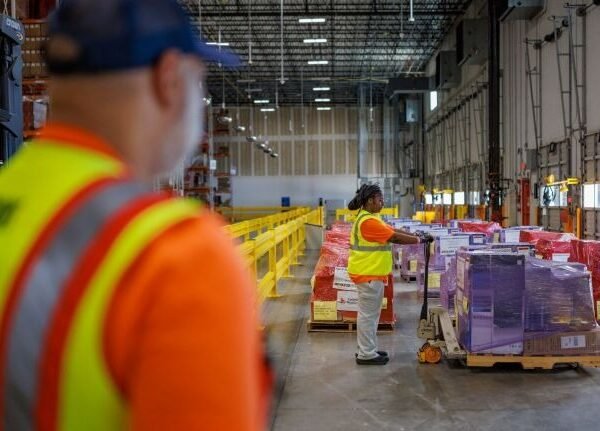As a videographer, you must be well aware of how crucial it is to deliver high-quality video streams. Whether you are broadcasting live events or distributing on-demand content, ensuring that your audience receives smooth playback is critical. One of the key technologies used to achieve this is constant bitrate (CBR) streaming, particularly when combined with a Content Delivery Network (CDN).
This guide will discuss how to optimize constant bitrate streaming for CDN networks. After the basics, we will walk you through challenges and practical steps to improve your streaming performance.
So, let’s get started!
What is Constant Bitrate (CBR) Streaming?
CBR streaming transmits video with a fixed bitrate throughout the entire stream, meaning that the data rate, or amount of data transmitted per second, does not vary during playback. This is in contrast to variable bitrate (VBR) streaming, where the bitrate adjusts based on the complexity of the content.
CBR streaming brings predictability. With a constant bitrate, the network can be optimized to handle the stream efficiently, making it a popular choice for live streaming and other real-time applications. However, maintaining a high-quality stream while ensuring consistent delivery can be challenging, especially when using CDN networks.
Why Use a CDN for Streaming?
Content Delivery Network is a server network strategically located in different geographical regions. Its purpose is to deliver content, such as videos, to end-users as efficiently as possible. CDNs use caching and load-balancing techniques to reduce latency and improve the viewing experience.
When combined with CBR streaming, a CDN helps to ascertain that the video stream is delivered smoothly and with minimal buffering, regardless of the user’s location. By offloading content delivery to a server network closer to the user, CDNs also reduce the burden on your origin server, making your video delivery more scalable.
Challenges of Optimizing CBR Streaming
While CBR streaming offers several advantages, it presents unique challenges, especially with CDN networks. Some of the most common challenges include:
Network Congestion and Latency
Among the biggest challenges in streaming is ensuring that the video data is transmitted without interruption, even if there is network congestion. When the network is congested, packets may be delayed or lost, leading to buffering or degraded quality.
To address this issue, CDNs use multiple edge servers to route traffic efficiently. However, it would help if you still optimized your CBR stream to handle fluctuating network conditions, especially during peak usage.
Server Load Balancing
When delivering video streams through a CDN, balancing the load between different servers is essential. If one server is overloaded, it may be able to provide the video smoothly, resulting in a better user experience. This requires careful configuration of the CDN to ensure that no server is swamped with too much traffic.
Video Quality and Compression
CBR streaming relies heavily on video compression to maintain a consistent bitrate. However, compressing the video too much can result in lower visual quality. Finding the balance between compression and quality ascertains a smooth and high-quality viewing experience.
Steps to Optimize CBR Streaming for CDN Networks
Let’s look at practical steps to optimize constant bitrate streaming for CDN networks.
Choose the Right Bitrate
Choosing the correct bitrate for your CBR stream is crucial. Too high bitrate can overwhelm the network, while too low can lead to poor video quality. A general rule of thumb is to select a bitrate that is appropriate for the type of content you are streaming and the average viewer’s internet speed. For instance, for standard HD content (720p), a bitrate between 3-5 Mbps might be sufficient, while for 4K content, you may need a bitrate of 15-25 Mbps. Use adaptive bitrate streaming with CBR for different quality tiers based on user bandwidth.
Utilize Multi-CDN Architectures
In some cases, more than relying on a single CDN may be required to guarantee optimal performance, especially during high-traffic events. Using a multi-CDN architecture allows you to distribute traffic across multiple CDNs, reducing the risk of congestion and improving the overall reliability of your streams. Using more than one CDN, you can route traffic through the best-performing network at any given time, ensuring smooth delivery even when one CDN experiences issues or overloads.
Enable Caching and Edge Servers
CDNs cache video content on their edge servers located closer to the end users. This reduces the distance data travels, lowering latency and improving stream delivery. Ensure your CDN is configured to cache as much content as possible, including video files and segments, to maximize efficiency. Edge servers also help offload traffic from the origin server, which can become a bottleneck if all users request video from a single location. Using a CDN’s edge server network will deliver your content more quickly and reliably to users, especially during peak demand times.
Monitor Performance and Optimize Regularly
Optimizing CBR streaming is not a one-time task. To ensure the best possible experience for your viewers, you need to monitor your video delivery performance regularly. Most CDNs provide analytics tools that allow you to track latency, packet loss, and other key metrics. Use these insights to identify potential issues and optimize your stream accordingly. For instance, if you notice frequent buffering, you may need to adjust your bitrate, use additional CDN edge servers, or change your video compression settings.
Implement Redundancy and Failover Mechanisms
Implement failover mechanisms to prevent interruptions in your stream. This ensures that if one server or CDN goes down, the traffic is redirected to another server or CDN without disrupting the viewer’s experience. Many CDNs offer automatic failover as a service, but verify that your streaming setup is correctly configured to handle these situations.
Optimize Video Compression Settings
You must ensure that your video is compressed efficiently to reduce file size without sacrificing quality. Standard video codecs like H.264 or H.265 (HEVC) are widely used—test compression settings to find the optimal balance between quality and file size. While H.265 offers better compression efficiency, it may require more processing power, so test it based on your target devices and viewers.
Conclusion
It would help if you optimized constant bitrate (CBR) streaming for CDN networks to deliver high-quality video to viewers worldwide. Your video streams will be efficient, reliable, and high-quality as you understand the challenges and implement the steps outlined in this guide. Remember, CBR streaming is all about predictability, and combined with a well-configured CDN, it can provide a smooth and seamless viewing experience.
Also read interesting articles at Disboard.co.uk













